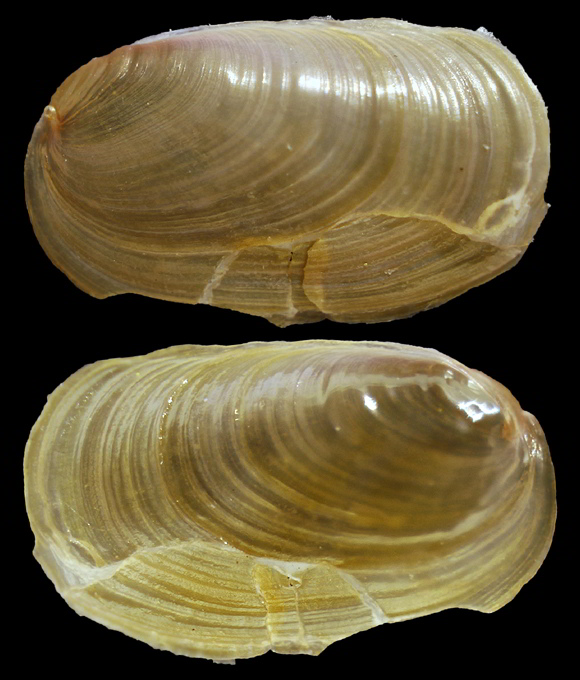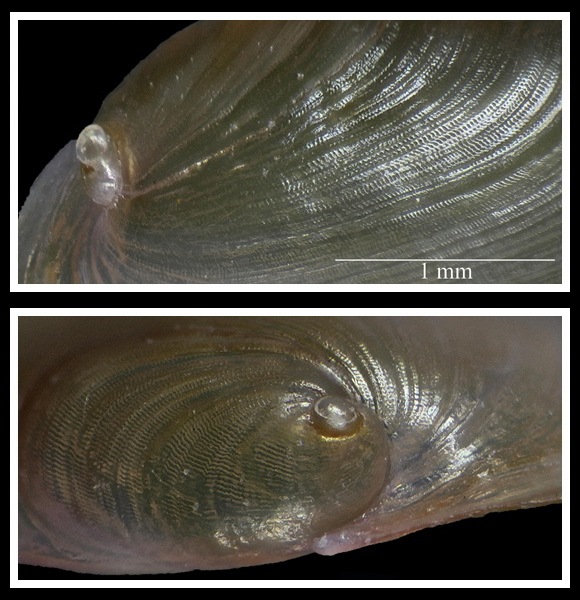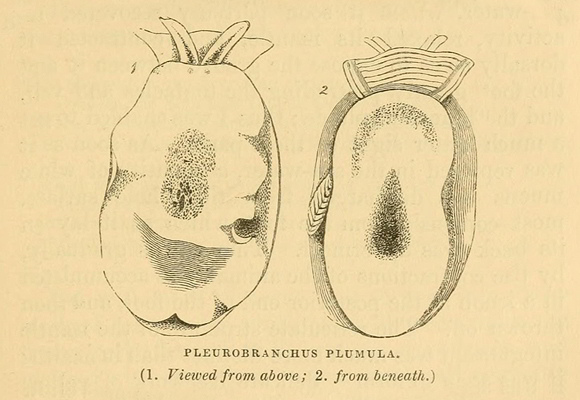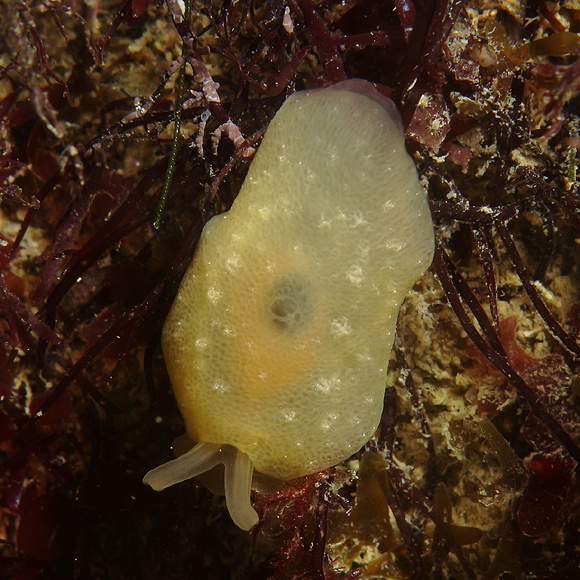
Basionym: Bulla plumula.
Synonyms: brevifrons, fleuriausi, kleciachi, montagui, perforatus, porosa, stomatellus.
Predator in the upper infralittoral, on compond ascidians and on yellow sponges such as Oscarella tuberculata (Schmidt, 1868). The colour of the animal, always yellow, could be the result of a successful mutation that keeps the species, when it feeds in exposed situation, hidden to its predators. In case of danger, it secretes some sulfuric acid (Mer & Littoral).
Beach drift, La Franqui, Leucate, Occitania, S. France. 8,4mm. Original pictures provided by S. Clanzig (FR).
– (CC BY-NC-SA) –

« Bulla with an ovate-oblong, depressed, pellucid, thin shell of a yellowish-white colour, tinged with brown at one end; the other end minutely convoluted on the back, or upper part, like the Bulla Haliotoidea, but much smaller; the convolution makes one whorl; it is strongly wrinkled concentrically for so delicate a shell, and is possessed of two or three ray-like indentations, running from the margin towards the apex. The inside, as well as the outside, is somewhat glossy and wrinkled; the aperture extends the whole of the shell, like the B. aperta. The pillar lip is slightly turned inward, to form the small depressed volution; but the aid of a glass is requisite to discover the formation of this part. » – G. Montagu: Testacea Britannica part I, London 1803, p.264. Above: the prominent apex and the fine microsculpture, pictured by S. Clanzig (FR) – (CC BY-NC-SA).

« We have two native species, neither of which can be considered common. The rarer of these, Pleurobranchus plumula, is found on our south-western coast, where it was first discovered by that eminent zoologist, Colonel Montagu. I had recently the good fortune to find two specimens in a rocky cove near Torquay, both of which lived in captivity for some weeks. The species is usually described as yellowish white; but my specimens were both of a rich golden yellow, with the central cloud brown, tinged in front with red, the underside of the foot of a light flesh colour. » – Ibid. p.130-131.

Shallow water, in algae, northern reefs, Passetto, Ancona, Marche, NE. Italy. Original picture provided by A. Colletti for iNaturalist – (CC BY-NC). The two antenna-like extensions on the head are olfactory organs; the skin of the animal is smooth, somewhat translucent, and covers a kind of reticulated structure in which lhe largest meshes are situated near the center; at this place, young and subadult specimens bear a dark area. The shell itself appears through transparency.